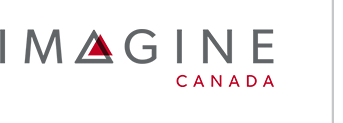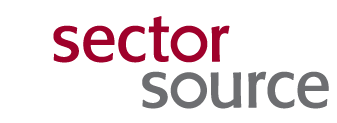Standards Section A : Board Governance
Description: We've identified the best resources to help your organization prepare to meet each standard.
-
Standard A1: Mission statement
A mission statement is a short, written statement that describes the core purpose of the organization including what it does, for whom and why.
-
Standard A2: Strategic plan
The strategic plan is a document that outlines the desired future for the organization and provides a roadmap that defines how the organization will achieve it.
Standard A2 Explained
-
Standard A3: Recruitment & orientation of most senior staff person
Hiring and monitoring the Executive Director or most senior staff person is one of the primary responsibilities of the Board of Directors of a nonprofit organization.
-
Standard A4: Management of most senior staff person
The board of directors is responsible for monitoring the performance of the organization’s most senior staff person in order to ensure that the organization is functioning effectively.
Standard A4 Explained
-
Standard A5: Compensation and expenses of most senior staff person
The board is responsible for determining and reviewing the compensation package of the organization’s most senior staff person.
Standard A5 Explained
-
Standard A6: Succession planning - most senior staff person
A succession plan sets out how potential departures of key personnel would be dealt with in the short-term and long-term through internal or external candidates.
-
Standard A7: Risk management
Risk is anything that could prevent a nonprofit from achieving its mission. An organization’s risks can be considered in terms of its four primary assets.
Standard A7 Explained
-
Standard A8: Insurance
Insurance protects your organization’s people and property from injury, loss, or damage incurred in the course of your organization’s operations.
-
Standard A9: Legal Compliance
The operations of nonprofit and charitable organizations in Canada are governed by documents including: the statute under which the organization is incorporated; the organization’s letters patent; the organization’s bylaws; the organization’s governance or policy manuals.
Standard A9 Explained
-
Standard A10: Communication & consultation with stakeholders
One of the primary tasks of the nonprofit and charitable board of directors is to communicate openly to its stakeholders, including its members and the broader community it serves.
Standard A10 Explained
-
Standard A11: Code of ethics/conduct
Codes of ethics or codes of conduct present the ethical principles that guide behaviour and decision-making within an organization.
Standard A11 Explained
-
Standard A12: Conflict of interest policy
Real or perceived conflicts of interest can occur when the personal interests of board members, staff, or volunteers are in conflict with the interests of the nonprofit or charitable organization with which they are affiliated.
Standard A12 Explained
-
Standard A13: Privacy Policy
Protecting the personal information of nonprofit staff, volunteers, and clients fosters a strong reputation for integrity.
Standard A13 Explained
-
Standard A14: Complaints Policy
Instead of viewing complaints as a nuisance, they can be seen as an opportunity to consider the organization’s activities and to make changes that could improve programs, services, or operations.
Standard A14 Explained
-
Standard A15: Whistleblower policy
Whistleblower policies and procedures protect individuals who discover that an organization is engaged in illegal practices or conduct that goes against an organization’s policies or other governing documents.
-
Standard A16: Number of meetings
Board meetings are the most significant venue in which board members are made aware of and assess the activities of a charity or nonprofit.
-
Standard A17: Board terms of reference
Board and committee terms of reference describe the purpose and operating structure of a nonprofit or charitable organization’s board of directors.
Standard A17 Explained
-
Standard A18: Board composition
The Canada Not-for-profit Corporations Act states that any soliciting corporation must have a minimum of three directors.
Standard A18 Explained
-
Standard A19: Board compensation
This standard prohibits board members from receiving monetary compensation in return for their service as a director of the board.
Standard A19 Explained
-
Standard A20: Board orientation
Orientation of new board members is an essential component of creating an effective board of directors.
Standard A20 Explained
-
Standard A21: Board records
Preparing and retaining proper minutes from board meetings is an essential part of a transparent and accountable governance process and serves to preserve a record of agenda items discussed, documentation reviewed, votes taken, and decisions made.
-
Standard A22: Board succession
Planning for succession to the positions of board chair and committee chairs minimizes disruption as directors leave or join the board and allows the board to ensure that important skills continue to be represented among its members and committees.
Standard A22 Explained
-
Standard A23: Board development
Providing developmental opportunities for board members is a valuable practice that represents an investment in individual board members, the effectiveness of the board as a group, and the impact of the organization in the community.
Standard A23 Explained
-
Standard A24: Performance of the board
Evaluating its own performance is a way for the board to build capacity and to demonstrate its commitment to ongoing learning and improvement.
Standard A24 Explained
-
Standard A25: Anti-harrassment policy
Developing and adopting an anti-harassment policy helps to ensure that staff and volunteers understand their rights and responsibilities in relation to this issue, and clarifies procedures for prevention, response, and enforcement.
Standard A25 Explained
-
Standard A26: Board Term Limits
Volunteer board directors should not view their role as permanent, although their interest in the wellbeing of the organization should be long-term in nature.
Standard A26 Explained
-
Standard A27: Equity and inclusion policy
As organizations working towards the betterment of Canadian society, charities and nonprofits have a responsibility to demonstrate leadership in the area of human rights.
Standard A27 Explained
-
Standard A28: In camera sessions
This practice helps to normalize in camera sessions, countering the notion that they are only scheduled to deal with matters concerning the CEO or an imminent crisis.
Standard A28 Explained

